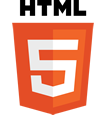In today’s digital age, your website is the cornerstone of your online presence. It’s the virtual storefront that welcomes potential customers, the information hub that educates them, and the conversion machine that turns them into loyal patrons. But what happens when your website becomes outdated, clunky, or simply fails to resonate with your audience? The answer is simple: It starts costing you money.

Many businesses cling to outdated websites for fear of the disruption or expense associated with a redesign. However, this “wait and see” approach can be a major financial pitfall. Let’s delve into the hidden costs of an outdated website and explore the true value of investing in a modern redesign.
The Silent Drain: Lost Leads and Conversions
First impressions matter, and your website is often the first point of contact for potential customers. An outdated website sends a message of neglect, disinterest, or worse, that your business is stuck in the past. This translates into lost leads and missed opportunities.
Imagine a potential customer searching for a product or service you offer. They land on your website, greeted by a pixelated design, outdated content, and a confusing navigation system. Frustrated and overwhelmed, they click away, never to return. This scenario plays out countless times for businesses with outdated websites.
Here’s how an outdated website can sabotage your conversion funnel:
- Poor User Experience (UX): Clunky navigation, slow loading times, and mobile incompatibility all contribute to a frustrating user experience. Users are less likely to explore your website, find the information they need, or complete desired actions (like making a purchase).
- Lack of Credibility: An outdated website screams “amateur” and undermines your brand’s credibility. It creates doubt in the minds of potential customers, making them question your commitment to quality and innovation.
- Limited Functionality: Older websites often lack features crucial for lead generation and sales, such as clear calls to action (CTAs), contact forms, or seamless integration with e-commerce platforms. These missing elements create unnecessary hurdles for converting visitors.
The Numbers Don’t Lie: The Financial Impact of Outdated Websites
The cost of an outdated website isn’t just theoretical. Studies show a direct correlation between website quality and business performance. Here are some eye-opening statistics:
- 75% of users judge a company’s credibility based on its website design ([source: Website Design Statistics 2024])
- 88% of online shoppers are less likely to return to a website after a bad user experience ([source: User Experience Statistics 2024])
- Mobile-unfriendly websites cost businesses an average of $62 billion annually in lost sales ([source: Forbes])
Think about it this way: Every website visitor represents a potential customer. By allowing your website to remain outdated, you’re actively pushing away valuable business opportunities.
Beyond Lost Leads: The Ripple Effects of Neglect
The negative impact of an outdated website extends far beyond lost leads. Here are some additional hidden costs you might not be considering:
- Increased Marketing Spend: An outdated website forces you to work harder in other marketing channels to compensate for its shortcomings. This translates to higher costs for advertising, social media campaigns, and other lead generation efforts.
- Decreased Employee Morale: When employees are aware of their website’s limitations, it can impact morale and reduce their confidence in promoting the business.
- Diminished Brand Value: An outdated website reflects poorly on your overall brand image. It portrays a business that is slow to adapt and out of touch with current trends.
Investing in Your Future: The Return on Redesign
A website redesign may seem like an expense, but in reality, it’s an investment in your business’s future. A modern, well-designed website offers a plethora of benefits:
- Increased Lead Generation and Sales: A user-friendly website with clear CTAs and effective lead capture forms will convert more visitors into customers.
- Improved Brand Image: A well-designed website strengthens your brand identity and portrays your business as a leader in its field.
- Enhanced SEO Performance: Modern websites are optimized for search engines, making it easier for potential customers to find your business organically.
- Reduced Marketing Costs: A high-performing website reduces your reliance on paid advertising and allows you to focus your marketing efforts on nurturing leads.
- Increased Employee Satisfaction: Employees take pride in working for a company with a modern and professional online presence.
- Improved Customer Satisfaction: A user-friendly website leads to a more positive customer experience, fostering brand loyalty and repeat business.
Quantifying the ROI of Redesign
The return on investment (ROI) for a website redesign is difficult to pinpoint as it depends on various factors like your industry, website traffic, and conversion rates. However, there are several ways to estimate the potential financial benefits:
- Increased Conversion Rates: Industry benchmarks for conversion rates can provide a starting point. By analyzing your current website’s performance and setting realistic goals for improvement after a redesign, you can estimate the potential increase in leads and sales.
- Reduced Bounce Rate: A bounce rate reflects the percentage of visitors who leave your website without taking any action. Studies show that well-designed websites can significantly reduce bounce rates. Lower bounce rates translate to more engaged users, ultimately leading to more conversions.
- Improved SEO Ranking: Higher search engine rankings translate into more organic website traffic. There are SEO tools available that can estimate the potential increase in traffic based on the website’s after-redesign improvements.
Beyond the Numbers: The Invaluable Benefits of Redesign
While the financial ROI of a website redesign is important, there are also intangible benefits that contribute to long-term success:
- Enhanced Customer Relationships: A user-friendly website fosters better communication and engagement with your customers. It acts as a valuable resource center, answering their questions and building trust in your brand.
- Improved Team Efficiency: A well-designed website with clear information architecture makes it easier for customers to find what they need, reducing the burden on your customer service team.
- Data-Driven Decisions: Modern websites often come with built-in analytics tools that provide valuable data on user behavior. This information allows you to make data-driven decisions and optimize your website for continuous improvement.
Making the Case for Redesign: A Call to Action
In a competitive online landscape, an outdated website is a liability. It puts you at a disadvantage compared to competitors who prioritize a modern and user-friendly online presence. By actively investing in a redesign, you position yourself for success by:
- Capturing a larger share of the online market.
- Strengthening your brand reputation.
- Boosting customer satisfaction and loyalty.
- Increasing your return on investment (ROI).
Don’t let the fear of change hold you back. Take the first step towards a more profitable future by scheduling a consultation with a reputable website design agency. They can assess your current website, recommend a strategic redesign plan, and help you unlock the true potential of your online presence. Remember, in the world of digital marketing, inaction can be the most expensive decision you make.













